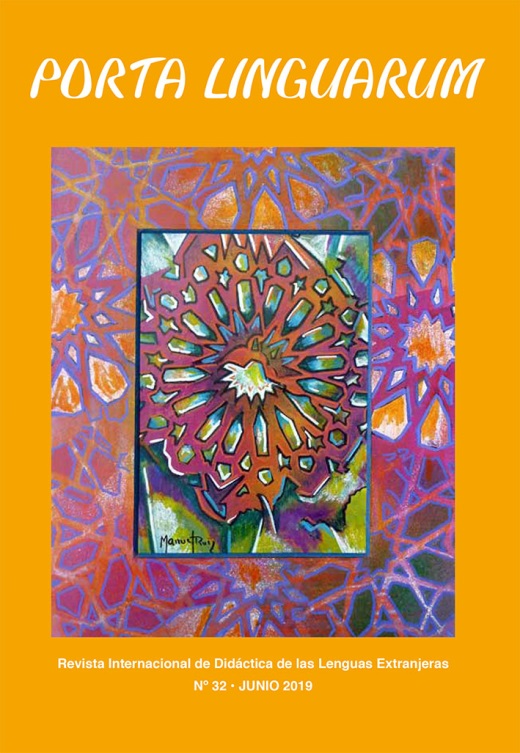Las relaciones entre las estrategias de aprendizaje de idiomas y las medidas de complejidad léxica
DOI:
https://doi.org/10.30827/portalin.vi32.13679Resumen
Este estudio está basado en la hipótesis según la cual las estrategias de aprendizaje de idiomas (LLS) se pueden explicar en parte por el nivel de la complejidad léxica obtenida en la producción escrita de los estudiantes de inglés. Para probar a la hipótesis, un grupo de ciento cincuenta y dos estudiantes de inglés de primer año, de origen lingüístico bosniaco L1 c, fue encuestado en el marco del Inventario de estrategias para el aprendizaje de idiomas (SILL) diseñado por Rebecca Oxford (1990). Su producción léxica fue recogida a través de los ensayos cortos escritos durante los exámenes formales sostenidos en inglés con fines académicos de los estudios de pregrado en la Universidad Internacional de Sarajevo. Las muestras escritas fueron convertidas en un formato electrónico y fueron analizadas gracias al Analizador de Complejidad Léxica basado en la Web (Lu, 2012; Ai & Lu, 2010). Las relaciones entre seis subescalas SILL y veinticinco medidas de complejidad léxica (LC) fueron evaluados a través de la aplicación de los principios del diseño correlacional. Los resultados han confirmado la hipótesis. Se concluye que la naturaleza de las relaciónes entre los niveles de LLS y LC está, en su mayoría, condicionada por los tipos de LLS.Descargas
Descargas
Publicado
18-04-2021
Cómo citar
Kovacevic, E. (2021). Las relaciones entre las estrategias de aprendizaje de idiomas y las medidas de complejidad léxica. Porta Linguarum Revista Interuniversitaria De Didáctica De Las Lenguas Extranjeras, (32), 37–52. https://doi.org/10.30827/portalin.vi32.13679
Número
Sección
Artículos [Número ordinario]



















